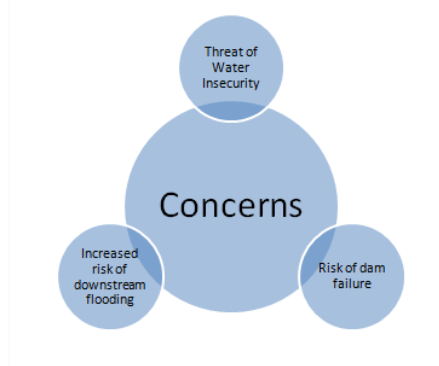Report titled ‘Ageing water infrastructure: An emerging global risk’ compiled by United Nations University’s Canadian based Institute for Water, Environment and Health.
Ageing dams in India:
-
About 1100 out of 5200 dams in India are over 50 years old.
-
The number of such ageing dams will increase to 4,400 by 2050. This means that 80% of the nation’s large dams face the prospect of becoming obsolete by 2050.
-
The situation of medium and minor dams is even more precarious as their shelf life is even lower than that of large dams.
-
Ageing leads to:
-
increasing cases of dam failures,
-
progressively increasing costs of dam repair and maintenance,
-
increasing reservoir sedimentation,
-
loss of a dam’s functionality and effectiveness.
-
Siltation in Indian reservoirs:
-
As dams age, soil replaces the water in the reservoirs. This is technically known as silt or sediment.
-
Sedimentation leads to a decrease in the storage capacity of dams.
-
Siltation rate in India’s dams has been substantially high.
-
Reservoirs are poised to become extinct in less than a few decades.
-
Studies show that the design of many of our reservoirs is flawed. Studies on reservoir sedimentation have shown that Indian reservoirs are designed with a poor understanding of sedimentation science.
Concerns/Consequences of ageing dams in India:

Examples:
-
The flooding of Bharuch in 2020, Kerala in 2018 and Chennai in 2015 are a few examples attributed to downstream releases from reservoirs.
-
Approximately 3.5 million people are at risk if India’s Mullaperiyar dam in Kerala, built over 100 years ago, “were to fail”.
Way forward:
-
India will have to find sufficient water in the 21st century to feed the rising population by 2050, grow abundant crops, create sustainable cities and ensure growth. In this regard, it is imperative for all stakeholders to come together to address the issue of ageing dams.